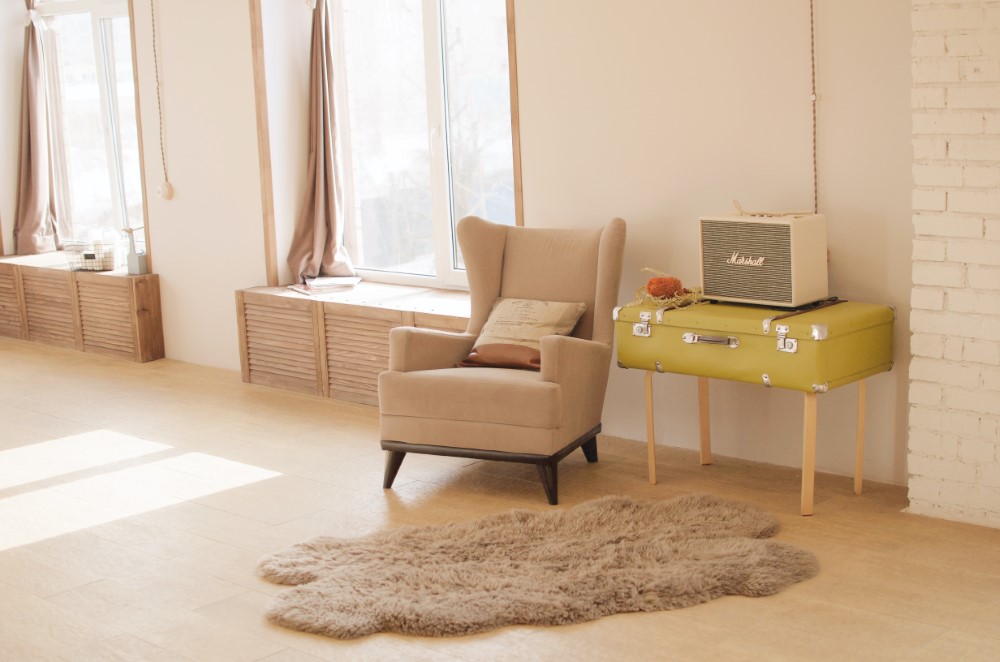How To Place An Area Rug In Every Room Of The House
An Introduction To Rug Placement
Rugs do more than just cover floors. They're a pivotal element in home design, offering protection, elegance, and comfort. When chosen and placed thoughtfully, a rug can become a room's centrepiece, influencing the entire decor. Whether you're decorating a bedroom, living room, or hallway, making sure your rug is in the right spot is essential to maximise its impact. They are also a great way to protect wood floors from your furniture.
Rug placement isn't merely about throwing a piece of fabric on the floor. It's a strategic decision. A rug, when placed correctly, can define spaces, establish harmony, and elevate a room's aesthetic. In living spaces, for instance, a rug should encompass key furniture, creating a unified look. In dining areas, it should be spacious enough to accommodate chairs, even when they're pulled out. Size is important when it comes to rugs. Too small, and the room feels off-balance. Too large, and the space may feel swamped. Always measure your space before buying.
Rugs can redefine a room. They offer warmth, comfort, and a splash of style. A lively, patterned rug can infuse a room with energy, while a subdued, neutral one can instil tranquillity. In bedrooms, a rug should stretch beyond the bed, welcoming your feet each morning. And while beauty is key, practicality matters too. Some rugs demand meticulous care, so always consider the room's function and the rug's upkeep.
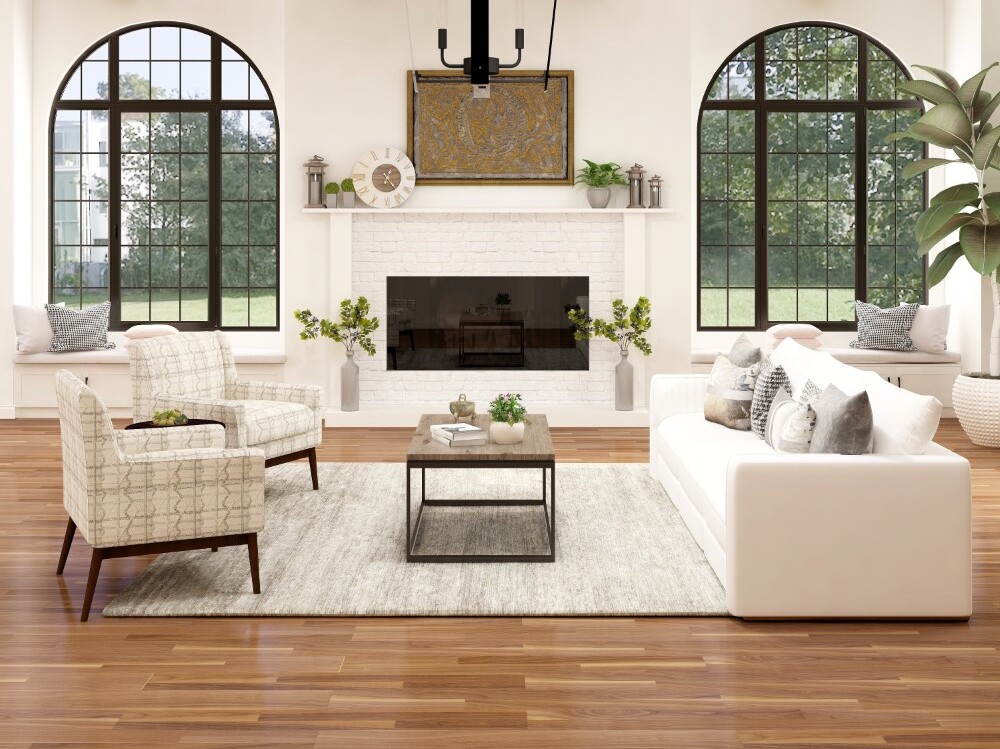
Basics Of Placing Your Rug
Rugs are more than decorative. They shape a room, both in function and style. Their strategic positioning can bring harmony and set a room's mood.
When it comes to rugs, size plays a pivotal role. It can alter a room's perceived space. In large rooms, a small rug can interrupt the ambience. In smaller spaces, a larger rug can feel overwhelming. A general rule? Deduct 3 feet from the room's dimensions when choosing a rug. A rug this size subtly expands the room. In dining spaces, the rug should stretch 24 inches beyond the table, accommodating chairs comfortably. And for corridors, runners should be a tad shorter and narrower than the hallway, ensuring aesthetic balance.
Placing a rug is an art with some steadfast rules. First, rugs can demarcate areas, especially in open spaces or studios. If using multiple rugs, ensure their styles harmonize. Rugs can also be the room's highlight. A vibrant rug, paired with matching wall colours or accessories, can be mesmerizing. And safety is paramount: always use a non-slip liner beneath your rug.
Rugs can uplift or downplay a room, depending on their placement. A common error is choosing a rug that's too small, makes spaces feel unbalanced. Overlooking the rug's shape is another. Not every room suits a rectangular rug; sometimes, an oval or round one fits better. And while it's tempting to frequently swap rugs, choose ones that can weather multiple decor changes. And remember, while rugs introduce patterns and hues, they should resonate with the room's existing theme and colours.
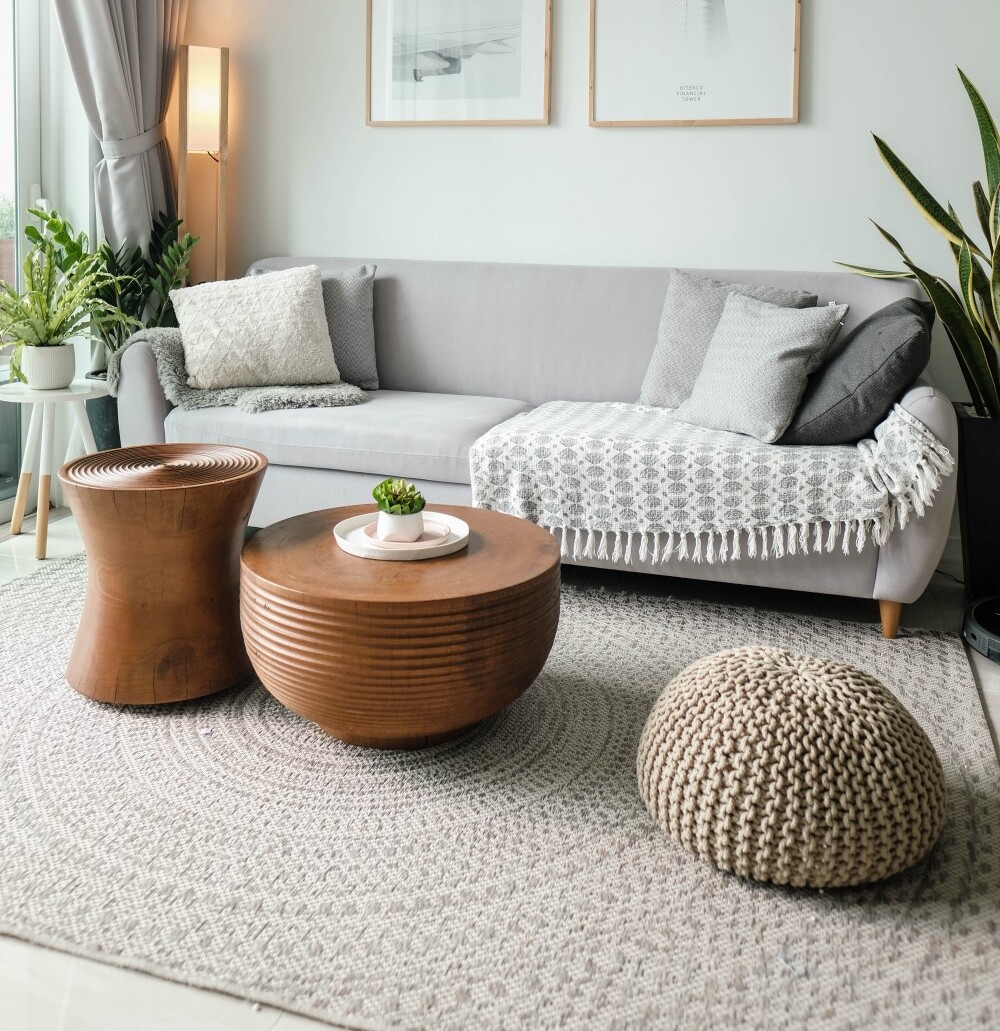
[H2] Room-by-Room Guide to Rug Placement
Rugs do more than beautify a space; they're pivotal in defining a room's ambience and function. Their strategic positioning can craft harmony, demarcate spaces, and influence a room's overall vibe. And since each room has its distinct purpose, rug placement should be tailored to each.
Where To Place a Rug In The Living Room
The living room is a home's epicentre, a place of gathering and memory-making. Here, the rug should be both a visual treat and serve a practical purpose.
In living rooms, rugs act as anchors, tying together furniture to create a unified space. Major furniture items, like sofas and coffee tables, should ideally find their place on the rug. This approach ensures a harmonious and interconnected ambience. Depending on the room's dimensions, furniture layout, and design, the rug's size can either amplify the space or define specific areas.
For open-plan living rooms, rugs can be instrumental in identifying the space. A rug might define the primary seating, while another could mark a reading corner or kids' play area. This strategy adds layers to the room and structures vast spaces. If using multiple rugs, it's vital they harmonize in colour, pattern, and style.
Sectional sofas, with their unique configurations, demand special attention. The rug should be expansive enough to sit under every part of the sectional, anchoring it seamlessly. It should also stretch out around the sectional, ensuring visual balance. If the sectional is against a wall, the rug should still project about 8 to 10 inches in front, offering a visual transition and a soft touch for the feet.
Where To Place A Rug In The Dining Room
The dining room is where meals turn into cherished memories. Here, the rug should both enhance the room's beauty and cater to its practical needs.
In dining spaces, the rug's expanse should comfortably include the dining table and chairs. Even when the dining chairs are drawn out, they should remain on the rug. This approach ensures visual cohesion and smooth movement. Typically, the rug should project at least 24 inches from the dining table's edge.
For circular dining tables, a round rug can create a symmetrical look. But if you're aiming for contrast, a sizable square or rectangular rug can also fit, as long as it comfortably houses the table and chairs. The goal is to maintain visual equilibrium.
Where To Place A Rug In The Bedroom
The bedroom is a personal retreat. Here, the rug should amplify the room's cosiness and warmth whilst fitting in with the rest of the bedroom furniture.
The bed's dimensions largely dictate the rug's size in a bedroom. For instance, a queen bed pairs well with an 8' by 10' rug, while a king bed might need a 9' by 12' rug. The rug should be oriented to the bed, extending on all sides, framing the bed and offering a plush step-out area.
Layering rugs is an emerging bedroom trend. A textured or patterned smaller rug atop a larger neutral one can introduce depth and luxury. This technique shines particularly in spacious bedrooms where a single rug might feel isolated. The layered rugs should have harmonious colours and patterns.
Where To Place A Rug In The Kitchen
The kitchen, a hub of activity, is often overlooked for rug placement. Yet, a well-chosen rug can add warmth, cushion the feet, and protect the floor.
Runners are favourites for kitchens, especially those with elongated layouts. They offer a cushioned path, easing the strain of standing. Positioned correctly, they should be in areas of most activity, like near the sink or stove, but not obstructing main pathways. The runner's width should allow some floor to peek through on both sides.
In kitchens, safety is paramount. Rugs should have non-slip backings or be paired with grip-enhancing pads. They should lie flat, with no tripping hazards from curled edges. Given the kitchen's spill-prone nature, opt for rugs that are easy to clean and possibly moisture-resistant.
Where To Place A Rug In Hallways and Entryways
Hallways and entryways guide movement between rooms. Here, the right rug can make transitions smoother, protect the floor, and set the design tone.
In hallways, the runner's length is vital. It should be a tad shorter than the hallway, allowing some floor to show at both ends. This approach crafts a spacious feel and ensures the rug doesn't dominate the space.
Entryways offer the first glimpse of your home. Here, a rug can make a bold statement. Choose designs that resonate with the home's overall aesthetic but don't hesitate to go vibrant or patterned. Given the high foot traffic, opt for durable rugs that are also easy to clean.
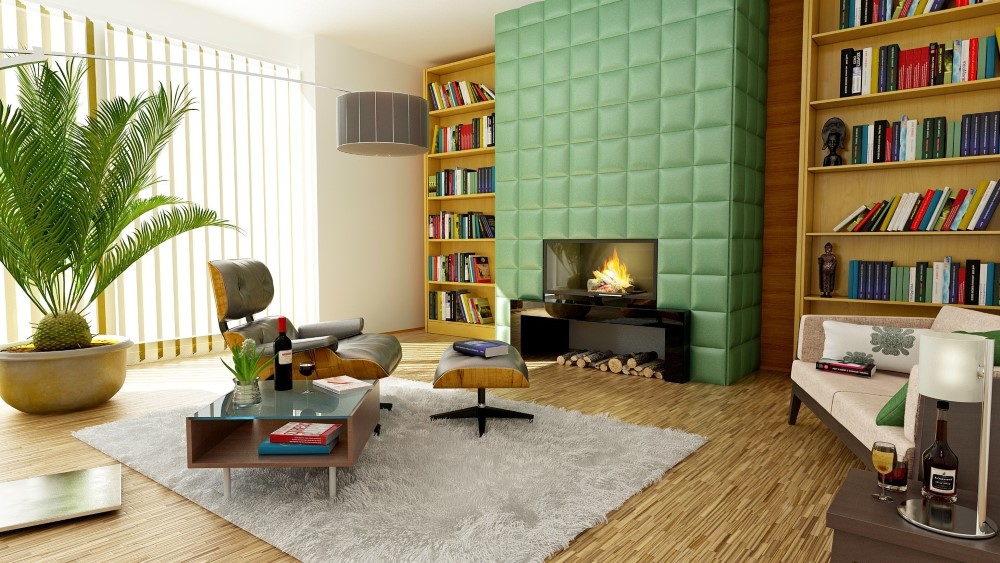
Rug Decoration And Styling
Rugs, while functional, are also artistic elements that can transform a room's aesthetic. Their strategic use can either complement existing decor or steer a room in a new design direction. Let's explore how rugs can be the linchpin in your decorating endeavours.
Colourful And Patterned Rugs
The vast array of colours and patterns in rugs offers homeowners a canvas to express their unique style. When choosing a rug, reflect on the room's current colour scheme. A rug that mirrors these colours can seamlessly integrate disparate elements, creating a unified ambience. Conversely, a rug with a bold pattern or contrasting colours can invigorate a subdued space. Striking the right balance between coordination and contrast is essential.
Depth Through Layered Rugs
Layering rugs introduces depth and intrigue to a room. A textured or patterned smaller rug atop a larger, subdued one can craft a layered, luxurious ambience. This technique shines in larger spaces where a lone rug might feel adrift. When layering, ensure the two rugs' colours and patterns are in harmony, and experiment with textures for added tactile appeal.
Using Rugs To Define Space
In expansive rooms or open-concept homes, rugs can carve out distinct zones. For example, separate rugs might demarcate a living area from a dining space in a combined room. This not only visually segments the space but also imparts structure and order. When using rugs for this purpose, their size and shape should be tailored to the intended area.
Vintage Rugs
Antique and vintage rugs can infuse modern spaces with timeless sophistication. These often hand-woven pieces add depth and narrative to contemporary settings. When integrating such rugs, be mindful of their fragility. Position them in areas with less foot traffic and ensure they resonate with the room's overall decor. The blend of historic elegance with contemporary elements can craft a uniquely captivating space.
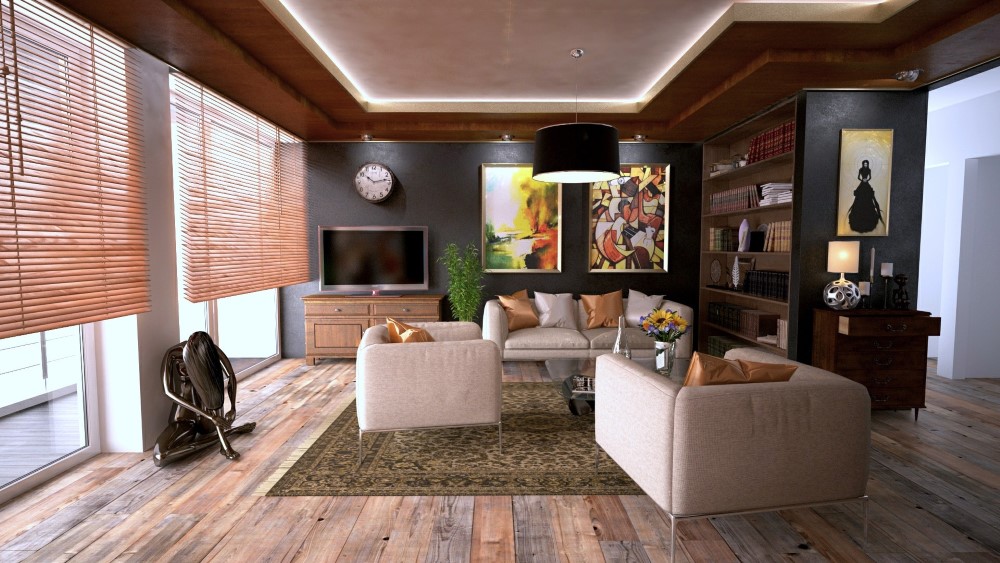
Maintaining Your Rug
While rugs can be the highlight of a room, their allure can diminish without proper care. They face daily challenges, from foot traffic to spills. Regular maintenance ensures their life is prolonged as much as possible. Let's explore the essentials of rug upkeep.
Routine cleaning is vital to maintain your rug's vibrancy. Weekly vacuuming can eliminate dirt that might degrade the fibres. For a deeper cleanse, especially for antique or high-end rugs, consider professional services. Always adhere to the rug's cleaning guidelines. For instance, certain natural fibre rugs may demand specialized care. Address spills promptly by blotting with a clean cloth to avert stains.
Areas with heavy foot traffic can be tough on rugs. To counteract uneven wear, periodically rotate your rug. Underlying rug pads can cushion the rug, prevent movement, and extend its life. If you own a valuable or antique rug, position it in a less frequented area to reduce wear. Moreover, shield rugs from prolonged direct sunlight to avoid colour fading.
If storing a rug long-term, ensure it's clean and moisture-free to prevent mould growth. Roll the rug with the design facing in and wrap it in breathable material, avoiding plastic, which can trap moisture. Store in a cool, dry environment, away from direct sunlight and pests. Periodically inspect stored rugs to ensure they remain in optimal condition.
Rugs as Design Anchors
Rugs, often underestimated, have the potential to redefine spaces, infuse warmth, and reflect personal style. As we've navigated the nuances of rug placement, decoration, and care, it's clear that these textile treasures are central to interior design. Whether you're pondering "how to accentuate a bedroom with a rug" or determining the best rug type for a living space, the right knowledge can elevate your decor.
Rugs are versatile design tools. From the comforting embrace of a plush bedroom rug to the statement-making potential of an entryway piece, rugs can anchor spaces, guide movement, and even offer acoustic benefits. Think of rugs not just as aesthetic elements but as functional assets. A strategically placed rug can direct foot traffic, shield floors, and even insulate a room.
Interior design is a deeply personal journey. While guidelines can offer direction, there's no universal solution. Your space should mirror your individuality and experiences. Rugs offer a chance to experiment with designs, colours, and textures. Perhaps a vintage rug aligns with your historical interests, or a bold pattern mirrors your modern sensibilities. The beauty of rugs lies in their flexibility; they can be swapped out, letting you evolve your style over time. As you embark on your rug-centric design journey, let your personal flair shine, and find that perfect piece that resonates with you.


